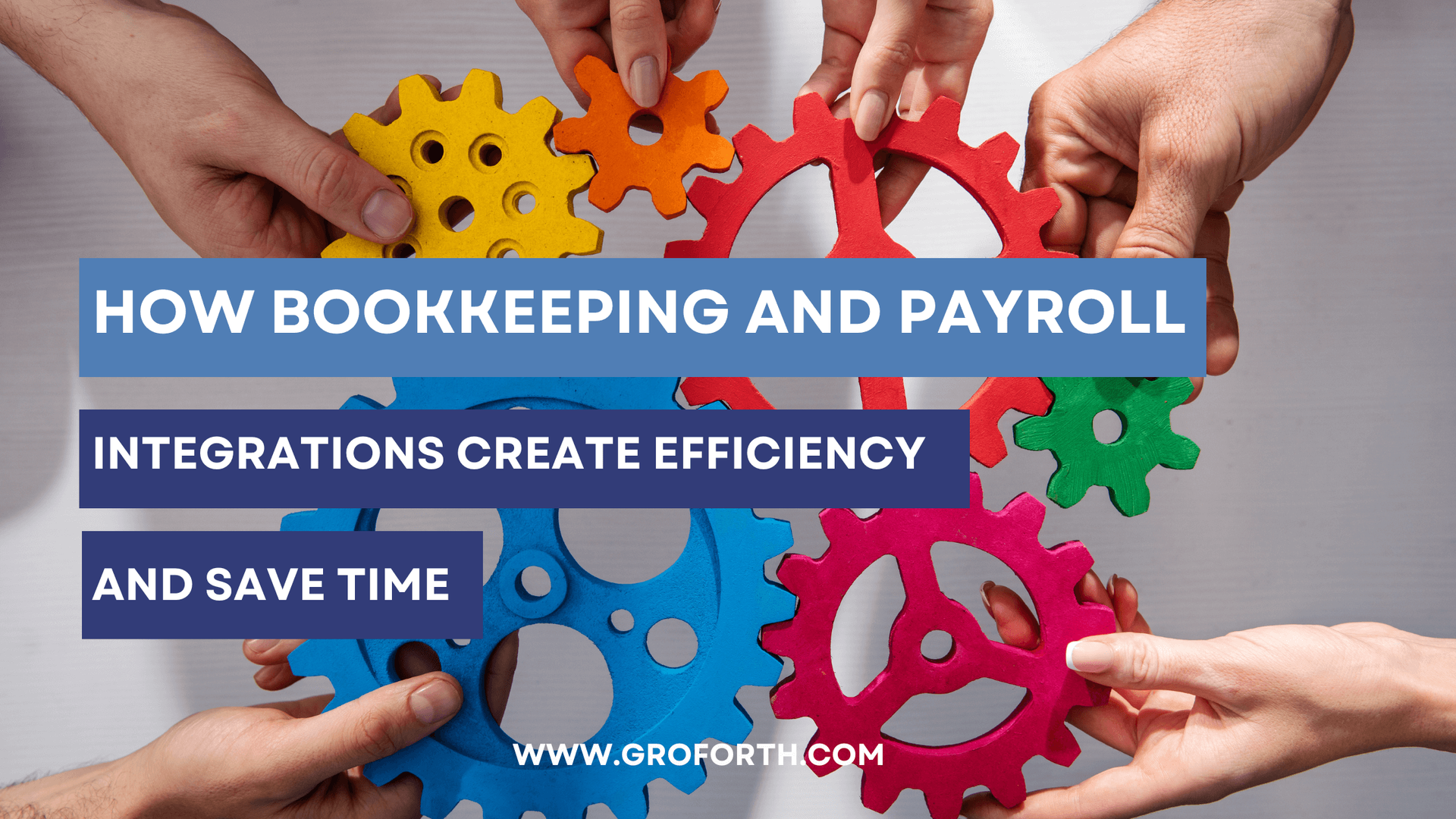How Bookkeeping and Payroll Integrations Create Efficiency and Save Time

The more integrated your systems are, the better as this will enable you to create efficiencies as you develop and grow your business. In this article, GroForth’s Ashley explains
• What can happen when bookkeeping and payroll are not set up correctly
• Why integration matters
• How integration works in practice
• Questions to ask when upgrading your systems
What can happen when bookkeeping and payroll are not set up correctly
When bookkeeping and payroll are not set up correctly, they can be both time-consuming and error prone. And although most businesses today use software packages like BrightPay and Xero to process payroll and accounts, we come across many instances where business owners are not taking full advantage of the opportunities these packages provide to streamline processes, reduce errors and save time.
Failure to take advantage of integration is sometimes simply due to lack of awareness of the potential benefits. When GroForth clients are looking to update or enhance their systems, we always stress that it’s not just a question of choosing the right package for the business, it’s also about finding and implementing reliable, secure and relevant tools that integrate with your accounting and payroll software. That’s because this is what will create real efficiencies both in terms of improving the operations of internal departments and enhancing how internal data such as sales orders, or third-party data like bank feeds, can be leveraged across the business.
Why integration matters
Another advantage of integration is that it often highlights opportunities to strengthen income streams and control costs. The more integrated your systems are, the better they enable you not just to make the most of your internal business data but also to potentially leverage data from your key business partners.
Amongst other benefits, integration helps you:
• save time—this is perhaps the single biggest benefit for many small business owners;
• manage your internal departments and administration more efficiently—this enhances profitability;
• access and use relevant third party data—this helps to improve your decision-making.
How integration works in practice
Accurate bookkeeping, accounts and payroll play a vital role in keeping your business financially viable. So, let’s look at a couple of practical examples of how integration works in practice.
If your sales system doesn’t automatically update your accounts, there is a risk that the invoices and monthly customer statements you send out to customers won’t accurately reflect what you are owed. This inevitably leads to queries that can be time-consuming to resolve and, in the worst situations, can even damage customer relationships.
Most of the accounting packages that GroForth clients use have integrations for things like sales invoices and payments and many of these systems offer a wide variety of other integration apps. For example, Xero—which is a popular accounting solution among our clients—has a dedicated App Store where you find apps to do things like integrate data from your ecommerce, invoicing, payments, bills and expenses, debtor management and time tracking.
Likewise, BrightPay—which quite a few of our clients use to manage their payroll—offers features like payroll journal integration with various accounting packages. This is achieved via an Application Programming Interface (API) which automates the otherwise time-consuming task of importing payroll data into the accounting system and helps reduce the risk of error.
Other accounting and payroll solutions also facilitate integration.
Upgrading your systems
If you are planning to upgrade your systems, key questions to ask include:
• Will the solution you are considering integrate with your HR, CRM and payroll systems?
• Is it compatible with your accountant’s systems?
• Can it take feeds of data from your bank and other relevant business partners?
Whatever systems you are using, it well worth checking out what’s available and investigating how potential integrations could benefit your business. If you are a GroForth client, we can help you to do this.
Talk to our team. We’ll be happy to point you in the right direction.
GroForth Blog










